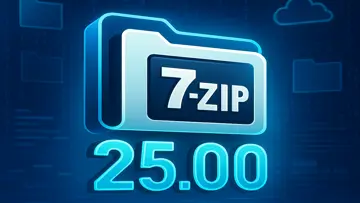5.0 Safe to install
This course provides an overview of contemporary signal processing techniques employed in geophysical investigations. It draws upon both the authoritative text "Signal Processing for Geologists and Geophysicists" by J.L. Mari, F. Glangeaud, and F. Coppens (1999), as well as the accompanying CD "Signal Processing in Geosciences" (F. Glangeaud, J.L. Mari, 2000).
Designed primarily for specialists in signal processing, the course illustrates how both classical and innovative theories can be applied to real-world field data. It also offers valuable insights for educators seeking effective approaches to teaching signal processing methodologies.
Foreword
This online course is organized into a sequence of thematic lessons, each addressing a specific aspect of signal processing. The key themes covered include:
- The Fourier Transformation
- Common Functions in Spectral Analysis
- Sampling Techniques
- Correlation Methods
- Wave Separation Techniques
- Seismic Applications
- The Hilbert Transformation
- Filtering Strategies
- Near Surface Geophysics
- Stochastic Signal Processing
- Attribute Analysis
Each thematic module comprises an introductory text, accompanied by instructional videos, a formulary with essential mathematical expressions, and, where appropriate, interactive applets for practical experimentation.
The presented texts have been deliberately condensed to focus on central concepts, with animations aiding in clarifying complex ideas such as various transforms used in seismic and geophysical data processing. The term "transform" is employed broadly here, encompassing notions like Fourier transforms and filtering techniques such as Wiener filtering. Demonstrations often involve applying these transform methods to synthetic or real geophysical datasets.
The videos serve to visualize the underlying data and illustrate the effects of different processing parameters. They are designed to facilitate immediate visual comparison and support understanding through parameter adjustments made via associated applets, which enable real-time computation within the interactive environment.
The formulary presents the mathematical formulas underlying the animations. It functions as a simplified reference tool; users are encouraged to consult the cited foundational texts for detailed notation and derivations.
All multimedia content, including videos and interactive applets, has been developed utilizing the MUSTIG software platform (mustig.free.fr, Gérard Lejeune).
Participants can select from 20 individual lessons within this online course. Whenever applicable, references to the original data sources or field measurement organizations are provided.
This course is intended as a supplementary resource rather than a standalone comprehensive training program. A background in foundational signal processing principles is recommended for an optimal learning experience.
The Author
Jean-Luc Mari currently serves as a geophysics professor at IFP School and is an expert affiliated with IFPEN. He supervises MSc research projects within the "Lithosphere, Basins, Petroleum" specialization, part of Paris VI’s Master’s program in Science and Technology.
He is a member of the European Association of Geoscientists and Engineers (EAGE) and has authored or co-authored numerous patents—particularly in acoustic well logging—as well as scientific articles and books on geophysical methods and signal processing.
His contributions also extend to developing educational materials, including online courses (http://www-ig.unil.ch/cours/) and CD-ROM-based resources.
Main areas of expertise encompass seismic acquisition and processing, reservoir geophysics, and civil engineering applications.
Overview
Signal Processing for geologists and geophysicists is a Freeware software in the category Education developed by ODYSYS SARL.
The latest version of Signal Processing for geologists and geophysicists is 5.0, released on 06/19/2025. It was initially added to our database on 06/19/2025.
Signal Processing for geologists and geophysicists runs on the following operating systems: iOS.
Users of Signal Processing for geologists and geophysicists gave it a rating of 5 out of 5 stars.
Pros
- Specialized tools for geologists and geophysicists that cater to their unique signal processing needs.
- User-friendly interface tailored for professionals in earth sciences.
- Comprehensive suite of features for analyzing geological and geophysical signals.
Cons
- Potentially high cost for an advanced, specialized software.
- May require training for effective utilization due to complex features.
- Limited applicability outside the geoscience domain.
Latest Reviews
|
|
Art
Unlock Your Creativity with Art by Fogware Publishing |
|
|
8-Bit Armies
Nostalgic Strategy Reimagined in 8-Bit Armies |
|
|
boxes
Innovative Design Tool for Efficient Organization |
|
|
eduVPN Client
Secure and Easy Access to Educational Networks with eduVPN Client |
|
|
o2 Cloud
Seamless Cloud Solutions with o2 Cloud by O2-De |
|
Gorn
Brutal Gladiatorial Combat in VR Delivers an Unforgettable Experience |
|
|
UpdateStar Premium Edition
Keeping Your Software Updated Has Never Been Easier with UpdateStar Premium Edition! |
|
|
Microsoft Edge
A New Standard in Web Browsing |
|
|
Google Chrome
Fast and Versatile Web Browser |
|
|
Microsoft Visual C++ 2015 Redistributable Package
Boost your system performance with Microsoft Visual C++ 2015 Redistributable Package! |
|
|
Microsoft Visual C++ 2010 Redistributable
Essential Component for Running Visual C++ Applications |
|
|
Microsoft OneDrive
Streamline Your File Management with Microsoft OneDrive |







